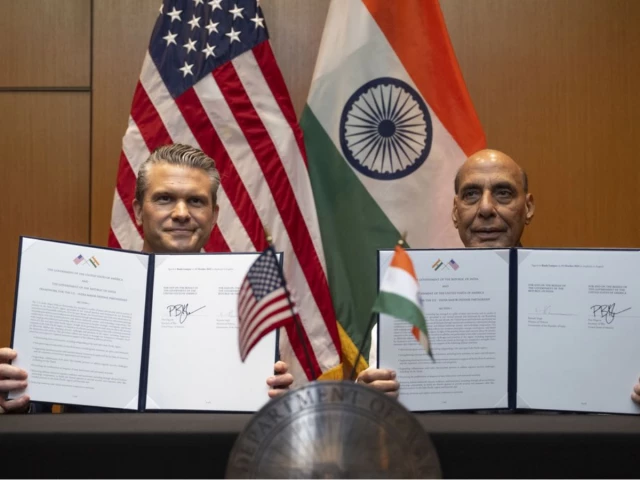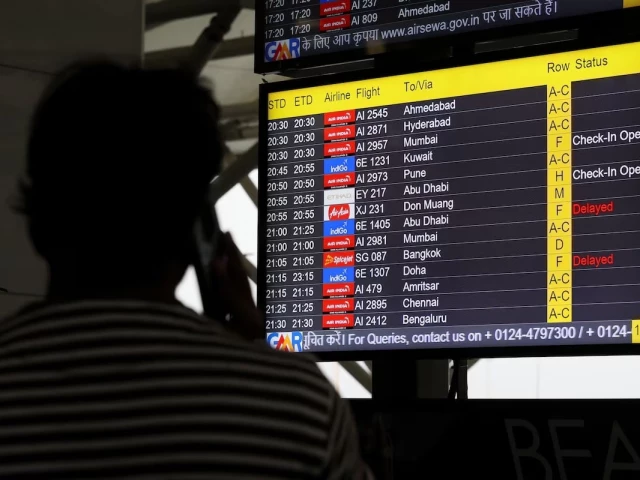The United States has signed a 10-year defence framework agreement with India [Source: X]
The United States has signed a 10-year defence framework agreement with India, US Defence Secretary Pete Hegseth announced on his X account.
Hegseth on Friday held talks with his counterparts from China and India, kicking off a series of meetings at an ASEAN defence summit in Malaysia as Washington seeks to strengthen regional security ties.
Hegseth said that he told China’s Defence Minister Dong Jun the United States would “stoutly defend its interests” and maintain the balance of power in the Indo-Pacific, while voicing concern over Chinese activities in the disputed South China Sea and around Taiwan.
I just met with @rajnathsingh to sign a 10-year U.S.-India Defense Framework.
This advances our defense partnership, a cornerstone for regional stability and deterrence.
We’re enhancing our coordination, info sharing, and tech cooperation. Our defense ties have never been… pic.twitter.com/hPmkZdMDv2
— Secretary of War Pete Hegseth (@SecWar) October 31, 2025
He hailed the newly signed 10-year defence cooperation framework with India as “a cornerstone for regional stability and deterrence” following talks with Indian Defence Minister Rajnath Singh. The two sides were also expected to discuss a review of India’s plans to purchase US military hardware.
Read: Trump tells Pentagon, US nuclear weapons testing to immediately resume
As Washington works to counter China’s growing assertiveness, Hegseth is also expected to meet the defence ministers of Indonesia, the Philippines and Thailand, according to an official who spoke on condition of anonymity.
Delegations from Australia, New Zealand, South Korea and Russia are also attending the ASEAN defence ministers’ meeting.
Chinese ‘grey-zone tactics’
Hegseth met Malaysia’s defence minister on Thursday, and both leaders reaffirmed their commitment to maritime security in the South China Sea — a busy waterway claimed almost entirely by China but overlapping the exclusive economic zones of Brunei, Indonesia, Malaysia, the Philippines and Vietnam.
Beijing has deployed a large coastguard fleet that has repeatedly clashed with Philippine vessels and been accused of disrupting the energy exploration activities of Malaysia and Vietnam.
“Grey-zone tactics, such as hydrographic research conducted under the protection of foreign coastguard vessels, threaten sovereignty and are a clear provocation and threat,” Malaysian Defence Minister Mohamed Khaled Nordin said in a joint statement.
Territorial disputes over islands and features in the South China Sea have remained unresolved for years. Beijing maintains that its coastguard operates professionally to defend Chinese territory from incursions.
The United States has been working to bolster its presence in Southeast Asia to counter China’s expanding influence. On Sunday, President Donald Trump told ASEAN leaders the United States was “with you 100% and we intend to be a strong partner for many generations.”
Washington already has a defence pact with the Philippines involving dozens of annual military drills and access to several bases, as well as similar exercises with Thailand and Indonesia and defence exchanges with Malaysia.
Read More: US decides to resume nukes testing
Shortly before meeting Chinese President Xi Jinping on Thursday, Trump announced that he had ordered the US military to resume nuclear weapons testing amid what he described as a rapid expansion of China’s nuclear arsenal.
While Trump’s push for allies to boost defence spending has caused friction, Japan’s Prime Minister Sanae Takaichi told him earlier this week that Tokyo was determined to enhance its defence capabilities.




